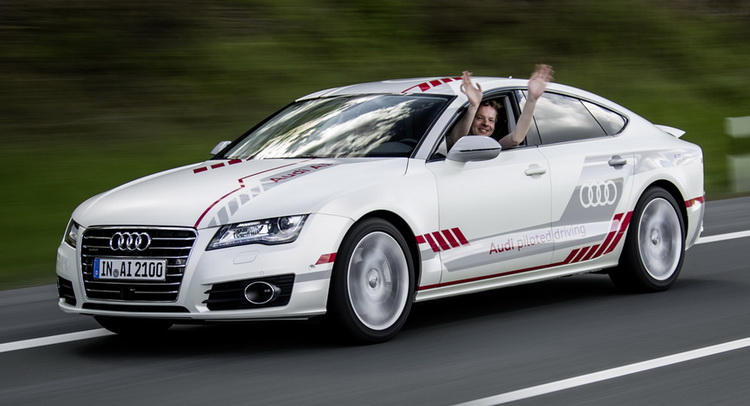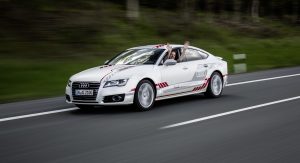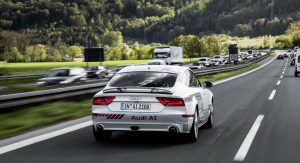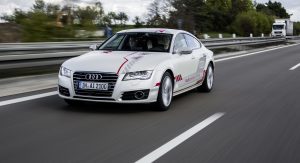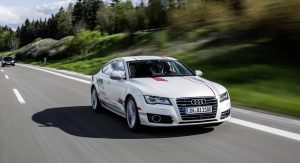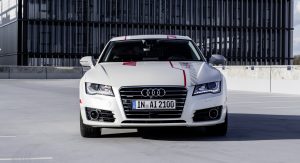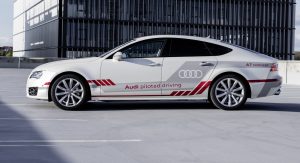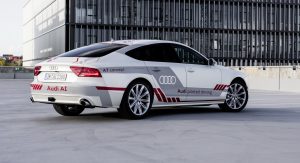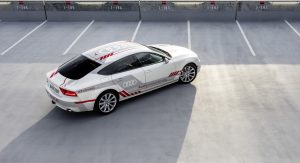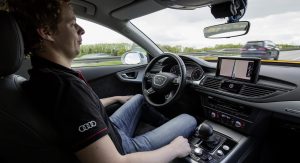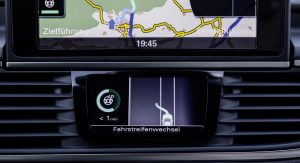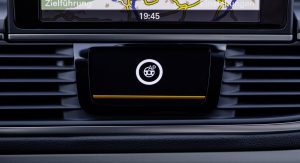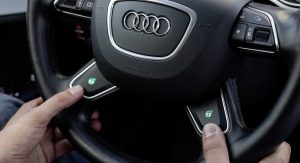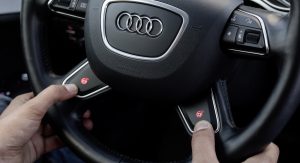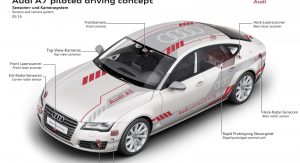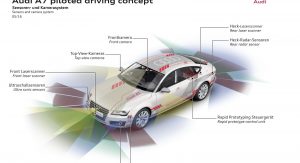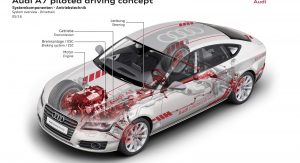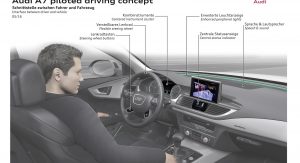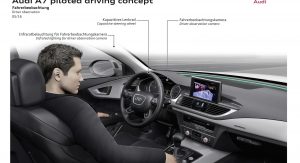The latest version of the Piloted A7 Concept has learned to adapt its driving for a more natural interaction with other road users.
The company claims that their research car with the nickname ‘Jack’ has not only learn how to execute all of its driving manoeuvres perfectly on public roads, but also show consideration for other drivers on the road.
More specifically ‘Jack’ now overtakes trucks keeping a slightly longer gap between them and indicates upcoming lane changes by activating its turn signal and moving closer to the lane marking first, in the same way human drivers would do.
This adaptive style is apparent when other vehicles want to merge into the lane, with the car “deciding” whether to accelerate or brake depending on which action will handle the specific traffic conditions more smoothly for everyone on the road.
The brain of the autonomous driving system, called zFAS by Audi, uses state-of-the-art processors to read the signals coming from all the sensors in real-time as well as to create a model of the car’s surroundings. This model mimics the current traffic conditions as accurately as possible, according to Audi, and lets the brain of the system calculate its moves in advance.
Audi is currently testing the piloted drive tech on the A9 autobahn, Germany’s first test site where the infrastructure communicates with an autonomous car. In addition to the car’s sensors, the road will feature special road signs, made to be more easily identified by the car from greater distances with Audi also testing elements of the future communications standard 5G.
Audi will also work with the city of Ingolstadt, testing road construction methods and the use of sensors in intersection zones from 2017 with official test operations to begin in 2018.




